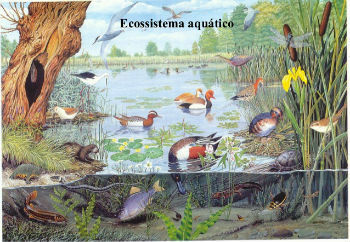All living beings are formed by cells, structures considered the smallest morphological and functional units of organisms. Some beings have only one cell, being called unicellular; others, however, present several sets of these structures, being considered multicellular. In multicellular organisms, cells with similar characteristics and that perform the same general function form the fabrics. The part of biology that studies tissue function and their interactions is called Histology.
The term histology began to be used in 1819 by Mayer, who created it based on the word fabric, from the Greek stories, proposed years earlier by Frenchman Xavier Bichat. This last researcher called tissue the macroscopic structures found in the body that had different textures. According to Bichat, we had 21 different types of tissue in our bodies.
In order for the study of histology to be possible, it was necessary to use equipment that enabled the visualization of microscopic structures. Consequently, histology developed along with the evolution of microscopic
. With each improvement in these equipment, more discoveries were made.Among the discoveries that histologists have made thanks to the development of the microscope we can cite the principles that make up the cell theory: cells constitute all forms of life; they are the morphological and functional units of organisms; and originate from preexisting ones.
In addition to the use of a microscope, the development of histology was directly related to the development of techniques that allowed the preparation of dead tissue and in vivo. Currently, the most used method is the preparation of permanent histological slides, which are used for analysis under optical microscopes.
For the preparation of histological slides, the histologist must follow the following steps: collection, fixation, processing, dehydration, diaphanization, impregnation, microtomy, gluing the cut to the blade, staining and mounting. For sample collection, the histologist may perform a biopsy, extensive surgery or necropsy. After the collection, the material must be fixed using heat, cold or chemical products called fixatives, such as formaldehyde and glutaraldehyde.
After fixation, the material is processed, that is, it undergoes techniques that allow it to be cohesive enough to guarantee cuts. For this, embedding materials such as paraffin are used. Depending on the product to be used for inclusion, the tissue must be dehydrated, that is, the water must be removed. After this step, it is necessary to carry out the diaphanization process, which clarifies the material, making it translucent. In the impregnation process, the material must be submitted to techniques that guarantee the total inclusion of impregnating agents, such as paraffin and polyethylene glycol. At the end of the impregnation, a block with tissue inside is obtained, which is cut using a microtome in a process called a microtomy.
Do not stop now... There's more after the advertising ;)
The cut material is then placed on the slide for gluing and undergoes coloring techniques, which vary according to the tissue to be checked and the structure to be observed. Finally, we have the blade assembly, which consists of removing the water and placing the mounting medium and cover slip to seal the cut.
With the preparation of these slides, a great evolution in the study of histology was guaranteed, in addition to allowing the material to remain in perfect condition for much longer. The advantage of the longer conservation period is that structures can be analyzed by several researchers at different times without material loss.
Currently, it is possible to classify human tissues into four different groups using as criteria their morphological differences and their functions in the organism. These fabrics are: epithelial, connective, muscular and nervous tissue.
O epithelial tissue it has juxtaposed cells with little intercellular material. The connective tissue, in turn, has a large amount of intercellular substance. Muscle tissue, on the other hand, is characterized by its ability to contract. Nerve tissue, in turn, has the ability to transmit nerve impulses.
In addition to dividing these four groups, we can classify them into other subtypes, such as:
→ epithelial tissue
Lining epithelial tissue;
Glandular epithelial tissue.
→ Connective tissue
Connective tissue itself;
adipose tissue;
Cartilaginous tissue;
bone tissue;
Hematopoietic tissue.
→ Muscle tissue
Skeletal striated muscle tissue;
Striated cardiac muscle tissue;
Unstriated muscle tissue.
→ nerve tissue
Check out the texts below to learn more about human tissues and their importance for the functioning of our bodies. Also, take the opportunity to stay informed about the main news in the field of Animal Histology.
Good studies!!!
By Ma. Vanessa dos Santos
( ) The epithelial tissue is well vascularized, that is: it is rich in blood vessels.
( ) Smooth muscle tissue contracts involuntarily.
( ) Blood tissue is composed of plasma, erythrocytes (white blood cells), leukocytes (red blood cells) and platelets.
( ) Connective tissue is divided into connective tissue itself, adipose, cartilaginous, bone and hematopoietic tissue.
( ) As for neurons, the axon is branched, being responsible for receiving nervous stimuli.
Suppose a doctor, analyzing a blood count, found that a certain individual had anemia, a tendency to hemorrhage, and infection. Considering your knowledge of the figurative elements of blood, check the alternative referring to the number (greater or lesser) of these elements that allowed the physician to conclude about the patient's problems in question.



